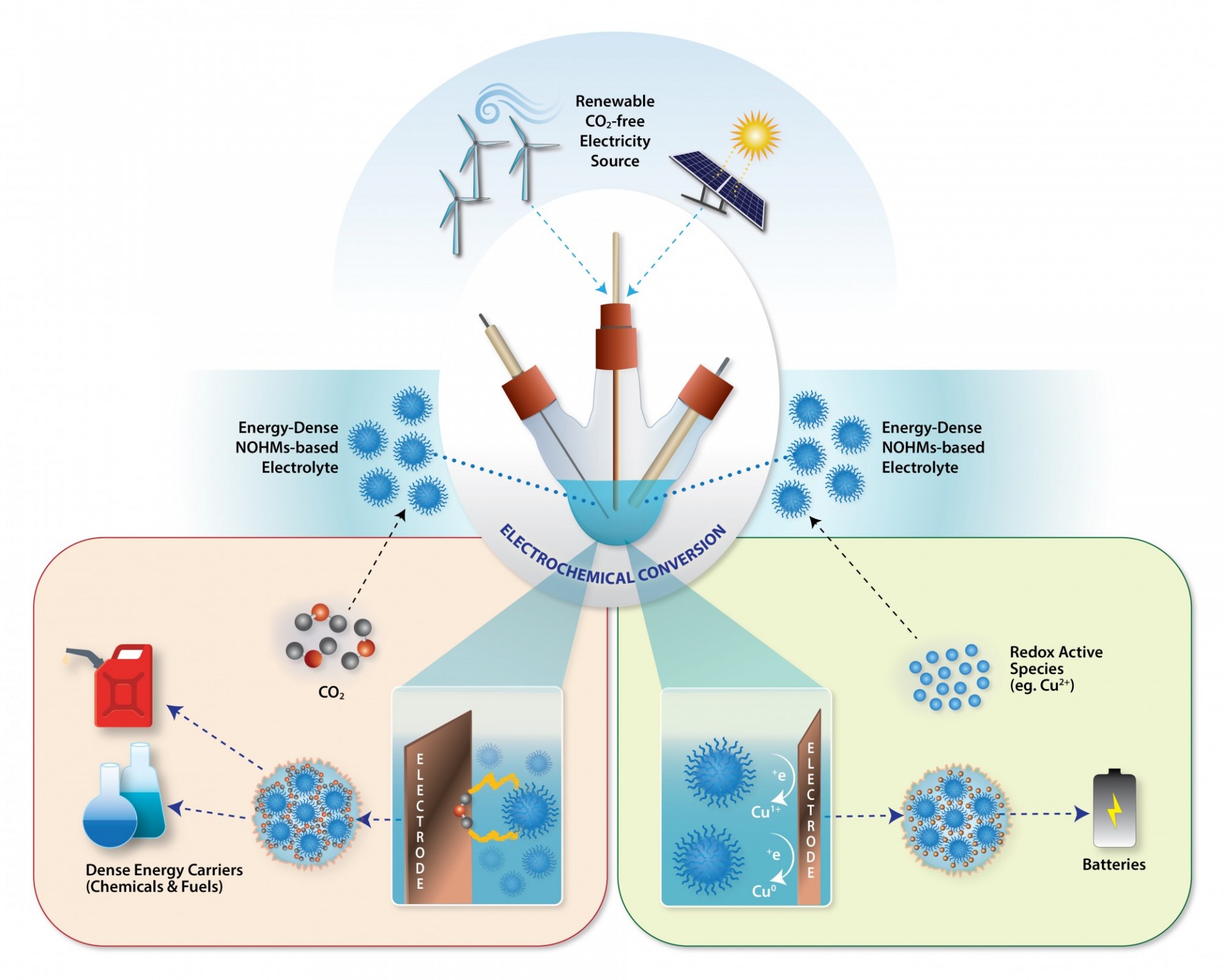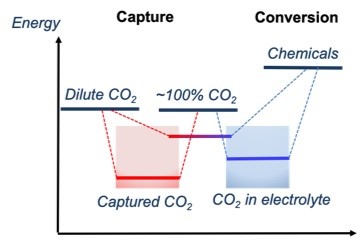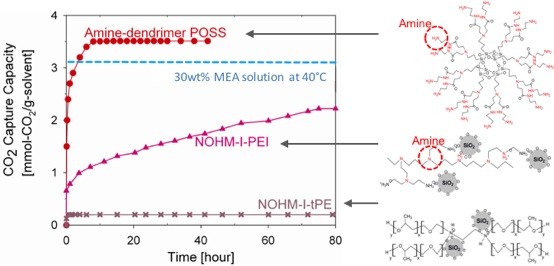
Renewable energy is limited by its intermittency, as its supply may fluctuate based on weather and location. Innovative energy storage technologies are required to decarbonize the electrical grid with stability. Both batteries and dense energy carriers have attracted vast research efforts as options for large-scale energy storage. With high scalability potential and long discharge times, flow batteries, where energy is stored in the form of redox active species, can be promising.
The purpose of this project is to develop innovative electrolytes materials which enable improvements in energy and power density simultaneously, safety and a reduction of environmental impacts and cost with respect to conventional electrolytes currently in use. The materials that will be explored are nanoparticle organic hybrid materials (NOHMs), which consist of a nanocore functionalized with polymer chains, where the polymeric canopy can be tethered ionically or covalently or the core. NOHMs have a high degree of structural flexibility and tunability, due to the ability to functionalize their polymeric chains.
In this project, NOHMs are exploited for their ability to carry redox active species, thus creating new electrolyte systems which are not limited by the solubilities of such species, thereby increasing electron transfer reactions and the efficiency of electrochemical conversions. The project also focuses on tuning the NOHMs-based electrolyte transport properties to lower viscosity and increase conductivity, which are related to the polymer conformational structure, degree of hydrogen bonding interactions and hierarchical structures enabled by NOHMs.
NOHMs CO2 Capture
Most of the recent CO2 conversion research has been focused on catalyst development. While the role of catalysts is very important, it is also important to consider other challenges such as the solubility of CO2 in the electrolyte. Water is not used as a CO2 capture solvent because the CO2 solubility is low. Thus, the dissolution of captured CO2 in the electrolyte is limited and this will limit the overall CO2-to-chemicals and fuels process. Thus, in my research group, we have been developing dual-functional materials that can capture and convert CO2 in a single reactive medium.
Liquid-like NOHMs (Nanoparticle Organic Hybrid Materials)are an emerging class of self-suspended nanoparticles with high CO2 capture capacity, particularly when functionalized with amine. NOHMs are comprised of a polymeric canopy tethered to surface-modified nanoparticles and have great thermal stability and negligible vapor pressure. NOHMs can be designed with unique nanoscale structures to shape the way CO2 is incorporated into the NOHMs via entropic effects. We have been able to modify the viscosity of NOHMs by adding a secondary fluid. We synthesize various solvent mixtures containing NOHMs in order to incorporate different CO2-targeting functional groups. The ionic conductivity can be tuned via changing the surface chemistry of the core or adding different functional groups to the canopy.
We have also discovered that NOHMs could be a novel electrolyte with high CO2 solubility. The preliminary synchrotron study at ANL has revealed that their unusually high conductivity may be due to a unique fractal structure exhibited by NOHMs in the bulk fluid. Thus, we envision that NOHMs may effectively host both CO2 capture and conversion reactions. These dual-purpose materials will allow innovative reaction pathways and reduce the overall parasitic energy consumption.

